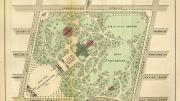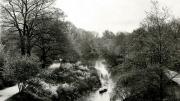Imperial Gamble: Putin, Ukraine, and the New Cold War, by Marvin Kalb, Murrow professor of practice emeritus (Brookings Institution, $29). Amid other geopolitical concerns, it is easy to overlook Ukraine. Kalb explains the history leading to the current conflict; keeping the current confrontation “cold” might be a fortunate outcome, in a fraught part of the world.
Two more takes on the world and management of its perceived trouble spots: The Guardians: The League of Nations and the Crisis of Empire, by Susan Pedersen ’81, Ph.D. ’89, RI ’95 and ’03 (Oxford, $34.95). A sweeping global history of the League of Nations and the “mandates” (World War I territorial conquests) that it oversaw, as the modern world took shape—up to the resumption of global war. The author is professor of history at Columbia. Kissinger’s Shadow: The Long Reach of America’s Most Controversial Statesman, by Greg Grandin (Metropolitan Books, $28). A critical interpretation, by a New York University historian, argues that Henry A. Kissinger ’50, Ph.D. ’54, as national security adviser to President Richard Nixon, created a militarized, imperial presidency. The book opens with a stark confrontation with former Harvard colleagues over the U.S. invasion of Cambodia.
The Graduate School Mess, by Leonard Cassuto, Ph.D. ’89 (Harvard, $29.95). A Fordham professor of English—one of those humanities fields afflicted with long times to the Ph.D., vanishing academic job prospects, antiquated requirements, etc.—draws attention to universities’ relative inattention to an ethic of teaching and preparation of students for life, likely largely outside the research university.
Leadership: Essential Writings by Our Greatest Thinkers, edited by Elizabeth D. Samet ’91 (W.W. Norton, $35). The newest Norton anthologist, a professor of English at West Point (and faculty adviser to Army Baseball), draws incredibly widely (from Virgil and Lao Tzu to Eugene Debs and Zadie Smith) to illuminate the essential tasks of leadership: from studying a system to cultivating trust—and beyond.
Frederick Law Olmsted: Plans and Views of Public Parks, edited by Charles E. Beveridge ’56, Lauren Meier, M.L.A. ’83, and Irene Mills (Johns Hopkins, $74.95). Beveridge, the preeminent Olmsted scholar (and editor of his collected Papers, working here with colleagues on the project) gathers in a sumptuous, gorgeous volume the designs that defined what made many American cities great, and livable.
Climate Shock: The Economic Consequences of a Hotter Planet, by Gernot Wagner ’02, Ph.D. ’07, and Martin L. Weitzman, professor of economics (Princeton, $27.95). The Environmental Defense Fund’s lead senior economist and a Harvard professor explain, in lay terms, why uncertainty about the degree of global warming, and the possibility of catastrophic change, ought to induce action, much as one would insure against any other kind of risk. In Harness the Sun (Beacon Press, $32), Philip Warburg ’77, J.D. ’85, past president of the Conservation Law Foundation, makes the case for solar power as a mainstream solution.
All the Wild That Remains, by David Gessner ’83 (W.W. Norton, $26.95). A nature writer immerses himself in the lives and visions of Edward Abbey and Wallace Stegner, two writers who conjured the modern West, in radically different ways.
Beethoven’s Symphonies: An Artistic Vision, by Lewis Lockwood, Peabody professor of music emeritus (W.W. Norton, $29.95). The leading Beethoven scholar introduces each symphony in turn, presenting them as “individual works of art” placed in the context of their “historical, biographical, and creative origins.”
The Rise of the Right to Know, by Michael Schudson, Ph.D. ’76 (Harvard, $29.95). An examination of “Politics and the Culture of Transparency, 1945-1975” (the subtitle), by a Columbia journalism professor, emphasizes the relative infancy of the right to know, from the Freedom of Information Act to fuller disclosure on product labels and environmental-impact statements.
Strange Tools: Art and Human Nature, by Alva Noë, Ph.D. ’95 (Hill and Wang, $28). Lest the intersection of art and philosophy seem daunting, the author, professor of philosophy at Berkeley (where he also works on cognitive science), writes with brilliant clarity about the intersection of the scientific (why can humans see much from such limited neural data?) and artistic (why do humans see so little) perspectives. Stimulating throughout.
Car Safety Wars: One Hundred Years of Technology, Politics, and Death, by Michael R. Lemov, LL.B. ’59 (Fairleigh Dickinson University Press, $85). In a year of record recalls of exploding air bags, a consumer-product-safety lawyer reviews the history of automotive design and regulation.
My Beautiful City Austin, by David Heymann, M.Arch. ’88 (John Hardy Publishing, $24). The author, an architect and University of Texas professor of that craft, here writes seven stories about a young practitioner who cannot dissuade clients from rotten decisions—hence, as the first tale puts it, “the scar tissue of a city.”
After Nature: A Politics for the Anthropocene, by Jedediah Purdy ’97 (Harvard, $29.95). On a planet increasingly shaped by human action (climate change, industrial emissions laid down in geographical strata), Duke’s Everett professor of law explores how to proceed in an era where people and nature, far from being separate, are increasingly one and the same.
Birth, Death, and a Tractor, by Kelly Payson-Roopchand ’92 (Down East Books, $24.95). From Somerville, Maine, “Connecting an Old Farm to a New Family,” as the subtitle puts it, from the early 1800s to the arrival of newcomers in 2008. The Point of Vanishing: A Memoir of Two Years in Solitude, by Howard Axelrod ’95 (Beacon Press, $16 paperback), is a differently situated (Vermont) northern New England memoir, by an occasional contributor to these pages, who focuses on cultivation of the self, rather than the land.
Married Sex: A Love Story, by Jesse Kornbluth ’68 (Open Road, $12.99 paper). A Manhattan divorce lawyer, his wife (a Barnard dean), and lover. A first novel by the cultural counselor who created Head Butler (see “Passionate Concierge,” September-October 2006, page 21).










